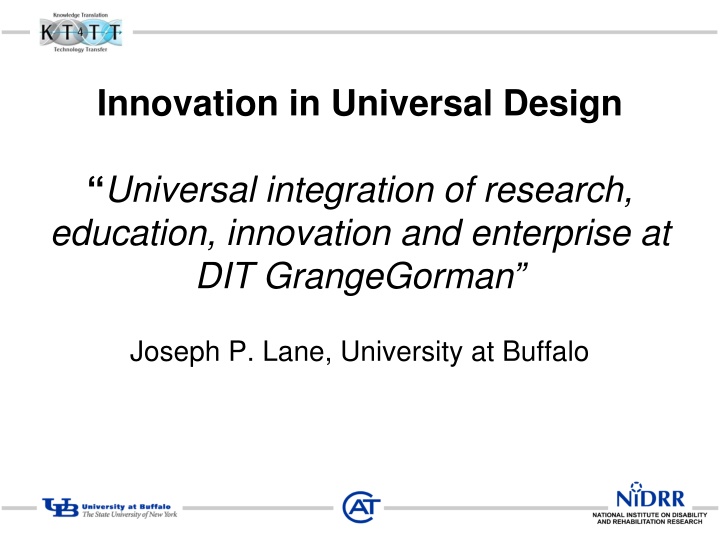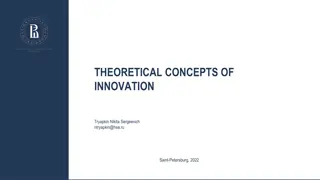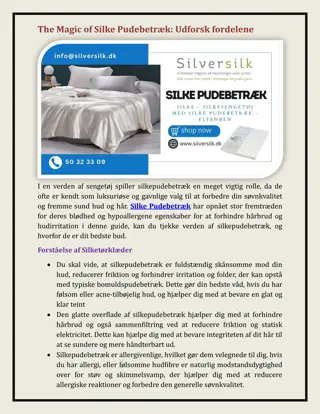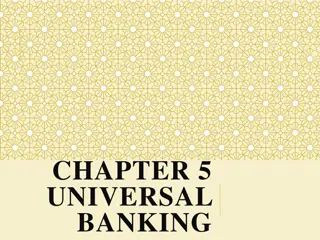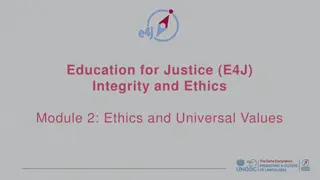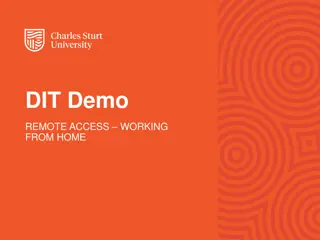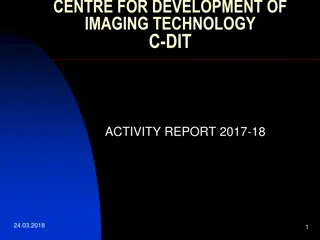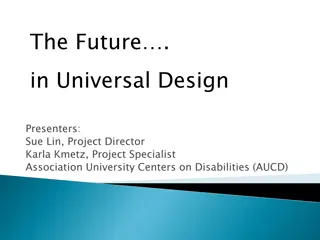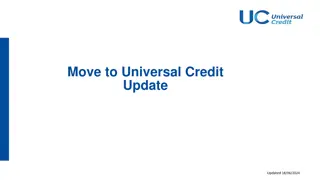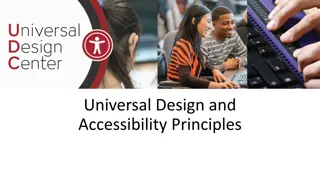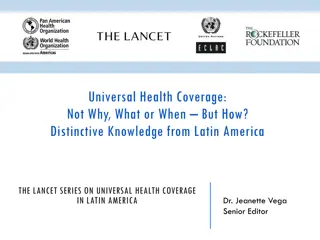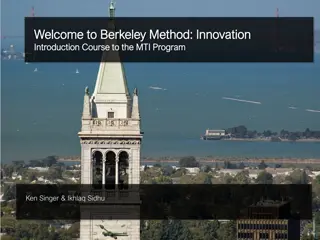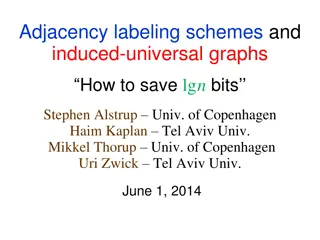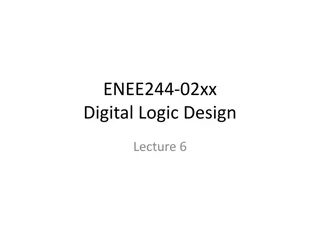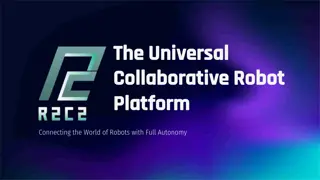Innovation in Universal Design at DIT GrangeGorman
Universal integration of research, education, innovation, and enterprise at Dublin Institute of Technology - GrangeGorman emphasizes the convergence of science, technology, and society to drive innovative solutions benefiting society. The collaboration among government, academia, and industry fosters open innovation and evidence-based impacts, leading to the evolution of monastic scholarly missions into dynamic engagements that serve as a civic catalyst for city building.
Download Presentation

Please find below an Image/Link to download the presentation.
The content on the website is provided AS IS for your information and personal use only. It may not be sold, licensed, or shared on other websites without obtaining consent from the author.If you encounter any issues during the download, it is possible that the publisher has removed the file from their server.
You are allowed to download the files provided on this website for personal or commercial use, subject to the condition that they are used lawfully. All files are the property of their respective owners.
The content on the website is provided AS IS for your information and personal use only. It may not be sold, licensed, or shared on other websites without obtaining consent from the author.
E N D
Presentation Transcript
Innovation in Universal Design Universal integration of research, education, innovation and enterprise at DIT GrangeGorman Joseph P. Lane, University at Buffalo
Three University Missions Research Scholarly monasticism evolving into dynamic engagement Broadstone Science & Industry Centre Education Holistic view of student life and lifelong learning Two Hearts Academic/Health & Social/Cultural Service University as civic catalyst Connections as City Building
Successive Trends Convergence of Science & Technology Public funding for Basic Research generates a repository of conceptual knowledge; Innovation expected via Diffusion Model. Convergence of Science, Technology & Society Public funding for Applied R&D generates a repository of prototype devices/services; Innovation expected via Linear Model. Convergence of Government, Academia, Industry Integrate three sectors in Problem Solution. Open innovation and evidence-based impacts.
Third Wave Convergence Knowledge is embodied in three distinct states: generated by Research, Development and Production methods respectively. Industry is critical missing partner: Government and academic projects intended to benefit society fail to cross market delivery gaps. Evidence supports collaborative approach: Links three methods, communicates knowledge in three states, and integrates key stakeholder.
1) Discovery State of Knowledge Research methods create new knowledge. Process Empirical analysis reveals novel insights regarding key variables. Output Conceptual Discovery expressed as manuscript or presentation - diffusion. Value Novelty as first articulation of new concept as contributed to knowledge base.
2) Invention State of Knowledge Development methods apply knowledge. Process Trial and error experimentation and testing demonstrates proof-of-concept. Output Tangible Invention embodied as operational prototype - transfer Value Novelty of conceptual discovery + Feasibility of tangible invention.
3) Innovation State of Knowledge Production methods codify knowledge. Process Systematic specification of components and attributes yields final form. Output Market Innovation embodied as viable device/service in defined context - commercialization. Value Novelty, Feasibility + Utility as revenue to company, function to customers.
Delivering Solutions to Problems involves progress across three Knowledge States Research Discovery Translation Utilization Development Invention Transfer Integration Production Innovation Release Lifecycle
7 Principles of Universal Design share attributes of an Innovation Novelty in that a product, system or environment offer more features or adaptability than those that previously existed. Feasibility in that a product, system or environment operates as intended under the full range of conditions specified in the design. Utility in facilitating function despite the variations in the user s abilities or their approach taken to the task, while generating an appropriate return to the provider to sustain operation and support.
UD Principles abound in Journals Quality Progress; IEEE Trans on Eng Mgt; Harvard Business Review; Quality Eng; European J. of OR; Trends in Food Sci & Tech; J. of Prod & Brand Mgt; J. of Prod Innov Mgt; Eng Mgt; J. of Eng Design; Int. J. of Prod Res; Behavioral Res in Acct; R&D Mgt; Int. J. of Prod Dev; Knowledge & Process Mgt; Medical Device Tech; Production Plan & Control; Strategic Direction; J. of Eng & Tech Mgt; Creativity & Innovation Mgt; J of Prod Dev; Industrial Mgt & Data Systems; Int. J. of Operations and Production Mgt; Res. Tech Mgt; Advances in Competitiveness Res; Int. J. of Medical Marketing; Computers in Industry; J. of Business Res; Int J of Production Economics.
Lead the Change! A new scientific truth does not triumph by convincing its opponents and making them see the light, but rather because its opponents eventually die, and a new generation grows up that is familiar with it. - Thomas Kuhn quoting Max Planck
DIT/CEUD: UD & Innovation The core principles and practices of Universal Design need to become fully integrated into theory and practice before their benefits to society are fully realized. Collaborative programs between government, academia and industry could address five key UD areas at DIT GrangeGorman, supported by the CEUD.
1) Clarify/Improve Definition & Principles Definition Easy to comprehend, sound feasible and affordable, reflect social participation, and address the public s emotional responses to design. Principles Substantiate with a set of goals that define what UD seeks to achieve in measurable terms. Alignment Related UD to social justice, sustainability and public health.
2) Overcome Utopian Ideal UD viewed as unrealistic and unobtainable, particularly in industry. R. Mace: to the greatest extent feasible E. Steinfeld: universal designing. EU Design for All Design for More Market Broadening, Trans-Generational or Human Centered Design.
3) Increase Supply of UD Partner with designers, builders, developers and manufacturers, as well as the building regulatory community. Promote participation in voluntary standards and building codes. Education and train next generation of scholars and practitioners in paradigm.
4) Increase Demand for UD Educate the public, particularly segments who experience functional impairments. Educate policy makers about the need to design for changing demographics. Promote exemplars of UD in products, building and environments. Collaborate with manufacturers and buildings responding to market forces.
5) Promote Evidence-based Practice Pervasively integrate theory and practice in programs and environments. Collect and evaluate date on outcomes to evaluate effectiveness of UD interventions, assess the quality of services delivered, and relate programs to policies. Apply knowledge translation to gather and review UD findings, then communicate results to all stakeholder groups.
Universal integration of research, education, innovation and enterprise at DIT GrangeGorman? Yes! Macro trends favor integration of knowledge in all states, and implementation for impact. Universal Design principles ready for refinement, expansion and demonstration. Government, academia and industry may achieve alignment at this time and in this place. Champions now need to influence planning, policy and practice.
ACKNOWLEDGEMENT This is a presentation of the Center on Knowledge Translation for Technology Transfer, which is funded by the National Institute on Disability and Rehabilitation Research, U.S. Department of Education under grant #H133A080050. The opinions contained in this presentation are those of the grantee, and do not necessarily reflect those of the U.S. Department of Education.
